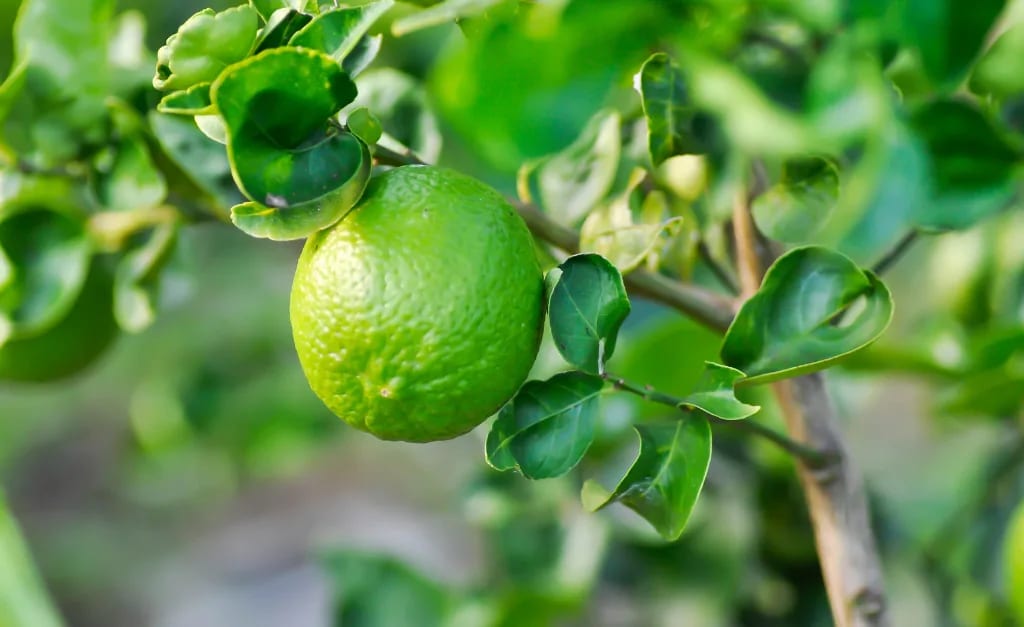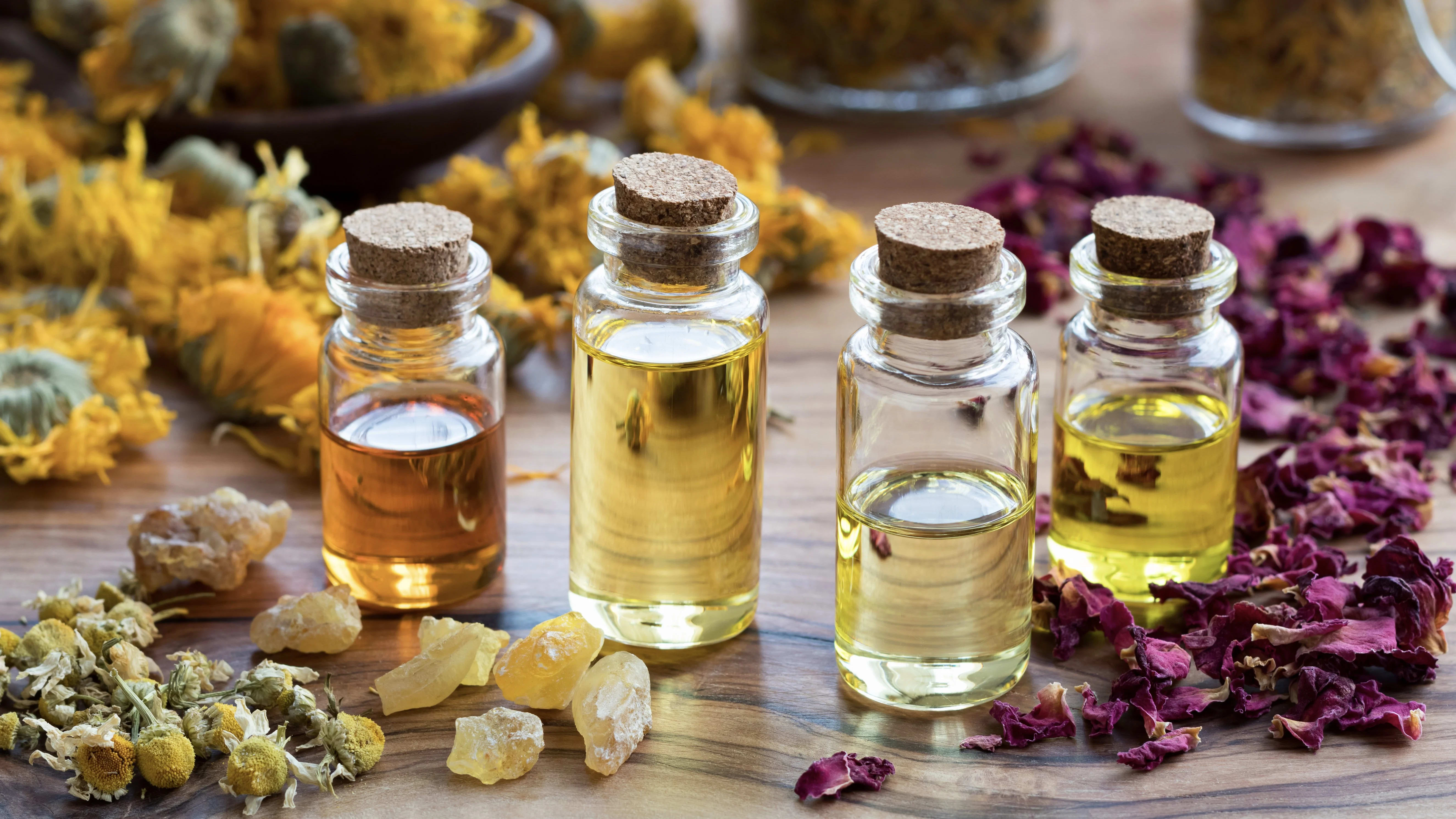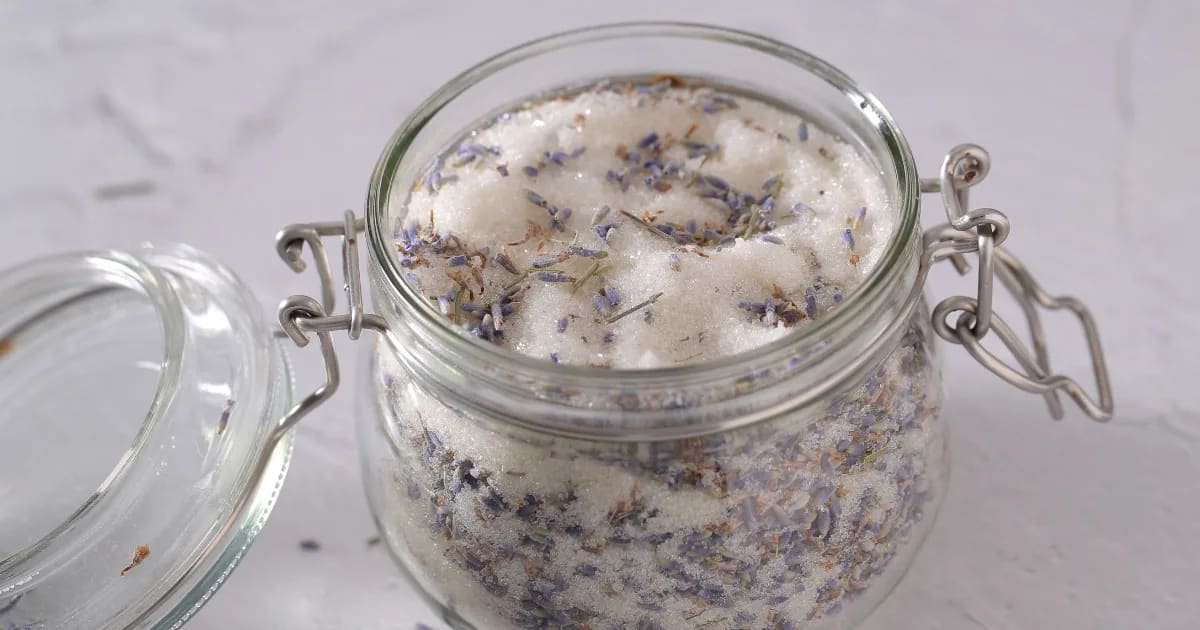My Top 5 Benefits & Uses of Lime Essential Oil

Lime: Sweet Surprises
I once had the privilege of visiting a Lime orchard in the picturesque landscape of Italy. There, I discovered a surprising truth about this beloved citrus fruit. The vibrant green Limes we're all so familiar with are actually unripe fruits. When left to fully ripen on the tree, Limes transform into a brilliant yellow hue.
Yet, we commonly buy them in their green state because that's what we've come to recognize as a "Lime." Their sweet, tart flavor at this stage is the taste profile we all know and love.
In the world of plants and aromatherapy, there’s always something new to learn!
This is why I’m endlessly fascinated by what science can tell us about essential oils—including those we think we know very well, like Lime (Citrus aurantifolia).
Today, I’m sharing 5 of my favorite benefits and uses for Lime essential oil, all based on chemistry and research.
You’ll find recipes for:
Stimulating your immune system
Supporting mental health as you age
Calming acne naturally
Soothing pain and sore muscles
Preventing cold sore outbreaks
Let's explore what research tells us about Lime essential oil, and perhaps find new ways to use an old favorite!
d-Limonene
This potent little monoterpene is the main component of every citrus oil. In Lime, it’s usually present at around 50%. d-Limonene has a long list of benefits, many of which I touched on in my previous post on Lime oil.
Immunostimulant
One fascinating benefit of d-limonene is that it may actually boost your white blood cell count!
A 2003 study concluded that d-limonene increased the total white blood cell count in mice. It also increased “antibody producing cells in the spleen, bone marrow cellularity, and α-esterase positive cells . . . indicating its potentiating effect on the immune system.”
Boosting our white blood cells is one of eight science-based ways essential oils support our immune health.
4 Heroes Immune Health Inhaler
This recipe from The Aromahead Blog combines Lime with three other immune-boosting essential oils to support your health in multiple ways.
Antioxidant
Antioxidants help our bodies fight free radicals, unstable molecules that lack an electron. To compensate, they steal electrons from healthy molecules in our cells, leaving our cells unstable.
Antioxidants provide the free radical with the missing electron, thus protecting our cells.
In a study published by the journal Antioxidants, d-limonene was found to have antioxidant properties that prevent cell death in cortical neurons, meaning it may help protect brain performance as we age. It’s also useful in skincare and anywhere we want to protect the integrity of our cells.

Antioxidant Oil for A Sharp Mind
This blend combines Lime with Bee Balm, another potent antioxidant oil.
Ingredients
1 oz (26 g) Coconut oil (Cocos nucifera)
8 drops distilled Lime essential oil (Citrus aurantifolia)
3 drops Bee Balm essential oil (Monarda fistulosa)
Directions
Make this blend in a 1 oz (30 ml) glass or PET plastic jar.
Put the coconut oil into your jar.
Add your essential oils.
Use a mini-spatula, stirring rod, or the handle of a spoon to stir your blend together. If your coconut oil is solid, you can “mush” the ingredients together until they’re thoroughly blended.
Apply the blend several times a day to your neck, shoulders, and chest. Breathe in the scent of your blend from your palms.
Be sure to use distilled Lime essential oil for this blend. (See the Safety section below for more information.)
Antibacterial
According to a 2022 review (a review compares many different studies on a single topic), d-limonene-rich oils…
“... have antibacterial activity on S. aureus, C. acne, and C. albicans…”
It also concluded that…
“... limonene caused the destruction of cell morphology and the integrity of the bacterial cell wall, damaging the cell membrane permeability...”
This review sums up why I love using steam-distilled Lime oil to reduce bacterial presence on the skin, to calm acne, and to make cleaning blends (in cleaning it blends well with Cinnamon Bark, which is a broad-spectrum antibacterial).

Lime & Aloe Acne Calming Gel
Ingredients
1 oz (26 g) or 1 fl oz (30 ml) Aloe Vera gel (Aloe barbadensis)
12 drops Solubol (dispersant)
1 drop distilled Lime essential oil (Citrus aurantifolia)
1 drop Patchouli essential oil (Pogostemon cablin)
Directions
Make this recipe in a 1 oz (30 ml) glass bottle.
Put the aloe vera into the bottle.
Add your essential oils.
Add the Solubol. Since aloe vera is water-based, we need Solubol to help disperse the essential oils. Otherwise, they’ll cluster together on the surface of the aloe, not dilute through it.
Shake your blend gently to combine the ingredients.
After washing your face, apply a thin layer of this gentle moisturizer. It has a subtle drying effect, so it’s good for reducing oily skin and calming acne. This post includes an acne spot treatment recipe.
y-Terpinene
I want to shift the spotlight to one of Lime Oil’s other prominent components.
The monoterpene y-terpinene shows up in classic Lime (Citrus aurantifolia) at about 15%. Its actions support those of d-limonene. Instead of leaning on just one molecule for these benefits, we have the support of two.
Pain and Inflammation
Relieving pain and calming inflammation go hand in hand, and we’re fortunate to have many essential oils that offer this benefit. However, they don’t all go about it in the same way (some mitigate inflammatory enzymes, while others numb pain sensations).
In the case of y-terpinene, a 2015 study found that it could …“...alleviate inflammatory parameters such as edema [swelling] and pro-inflammatory cytokine [protein] production, as well as cell migration into the inflamed site, and this monoterpene has anti-inflammatory properties.”

Lime & Coriander Muscle Soother
Trauma Oil is a blend of three healing herbs (calendula, St. John’s wort, and arnica) infused in a carrier oil. It calms inflammation all by itself, and when we add essential oils to it, we enhance the relief even further.
Ingredients
1 fl oz (30 ml) Trauma Oil
8 drops distilled Lime essential oil (Citrus aurantifolia)
8 drops Coriander essential oil (Coriandrum sativum)
Directions
This recipe is for a 1 fl oz (30 ml) glass dropper bottle. Combine the ingredients in the bottle and shake gently to blend.
Apply it 3 to 5 times a day while the pain persists.
Be sure to use distilled Lime essential oil for this blend. (See the Safety section below for more information.)
Antiviral
Citruses—from fruits to oils—are renowned for helping our bodies heal from viral attacks. I love including them in blends for colds and the flu.
y-Terpinene can inhibit the cold sore virus by as much as 80%. It works best on viruses that haven’t yet invaded a host cell. These are known as “free virus” particles. This means that essential oils rich in y-terpinene can prevent the spread of the virus (but may not speed the healing of existing cold sores).
Vanilla, Coconut, Cocoa, and Lime Lip Balm
This is a classic recipe from The Aromahead Blog! It combines some of the most decadent, delicious aromas into a lip-smacking balm that soothes, moisturizes, and helps prevent cold sore breakouts.
Lime Essential Oil Safety
Many citrus essential oils are phototoxic. This means that if they’re applied to the skin in a high enough concentration and that skin is then exposed to sunlight (or a UV tanning bed), unwanted reactions like blisters and burning can develop. In some cases, discoloration occurs—and is permanent. (Learn to use phototoxic citrus oils safely.)
I’ve even seen phototoxic reactions occur to bartenders who work on the beach, constantly squeezing lemons and limes into drinks, unknowingly getting the essential oil on their hands, and then going out in the sun.
However, only cold-pressed Lime essential oil is phototoxic.
The steam-distilled variety is NOT phototoxic.
That’s why I prefer working with steam-distilled Lime essential oil.
Whether you use cold-pressed or steam-distilled Lime, be sure to dilute it in a carrier before applying it to your skin.
For cold-pressed Lime, use no more than 4 drops per 1 fl oz (30 ml) of carrier in your topical blends. This dilution will help you avoid phototoxic reactions. Please avoid blending cold-pressed Lime with other phototoxic citrus oils, as this will increase the risk of using your blend on the skin.
For steam-distilled Lime, I sometimes go up to 18 drops per 1 fl oz (30 ml) of carrier. (At Aromahead, we consider that a 3% dilution.)
Learn more about The Aromahead Approach® to essential oil safety.
My Takeaway
Lime essential oil is like a burst of sunshine in a bottle, offering a myriad of benefits backed by science and cherished by many. Whether you're nurturing your skin, soothing tired muscles, or simply seeking a little wellness boost, Lime essential oil proves to be a wonderfully versatile companion in your collection.
As you enjoy its zesty aroma, remember to prioritize safety—cold-pressed Lime oil can be phototoxic, so choose steam-distilled Lime oil for more flexibility in your blends. Let the vibrant, uplifting scent of Lime essential oil brighten your day and enhance your well-being.
I would love to have you join me as we go into some fascinating aspects of depression! And some remedies! This workshop might be just for you!

Depression Relief: The Power of Jasmine, Sandalwood, and Rock Rose Oils
This workshop is an opportunity to understand and harness the benefits of these essential oils for emotional balance and mental wellness. Whether you're seeking personal solace or ways to assist others, our session offers valuable insights into the harmonizing powers of aromatherapy.
References
Astani, A., Reichling, J., & Schnitzler, P. (2010). Comparative study on the antiviral activity of selected monoterpenes derived from essential oils. Phytotherapy research : PTR, 24(5), 673–679. https://doi.org/10.1002/ptr.2955
Budhiraja SS, Cullum ME, Sioutis SS, Evangelista L, Habanova ST. (1999) Biological activity of Melaleuca alternifola (Tea Tree) oil component, terpinen-4-ol, in human myelocytic cell line HL-60. Journal of Manipulative and Physiological Therapeutics. 1999 Sep;22(7):447-53. doi: 10.1016/s0161-4754(99)70033-3. PMID: 10519561.
Han, Y., Sun, Z., & Chen, W. (2019). Antimicrobial Susceptibility and Antibacterial Mechanism of Limonene against Listeria monocytogenes. Molecules (Basel, Switzerland), 25(1), 33. https://doi.org/10.3390/molecules25010033
Nurzyńska-Wierdak, R., Pietrasik, D., & Walasek-Janusz, M. (2022). Essential Oils in the Treatment of Various Types of Acne-A Review. Plants (Basel, Switzerland), 12(1), 90. https://doi.org/10.3390/plants12010090
Piccialli, I., Tedeschi, V., Caputo, L., de Martino, L., de Feo, V., Secondo, A., Amato, G., Pannaccione, A. (2021) The Antioxidant Activity of Limonene Counteracts Neurotoxicity Triggered by Aβ1-42 Oligomers in Primary Cortical Neurons. Antioxidants 10(6), 937; https://doi.org/10.3390/antiox10060937
Ramalho, T. R., Oliveira, M. T., Lima, A. L., Bezerra-Santos, C. R., & Piuvezam, M. R. (2015). Gamma-Terpinene Modulates Acute Inflammatory Response in Mice. Planta medica, 81(14), 1248–1254. https://doi.org/10.1055/s-0035-1546169
Raphael TJ, Kuttan G. (2003) Immunomodulatory activity of naturally occurring monoterpenes carvone, limonene, and perillic acid. Immunopharmacol Immunotoxicol. May;25(2):285-94. doi: 10.1081/iph-120020476. PMID: 12784919





